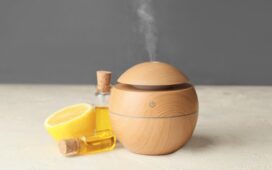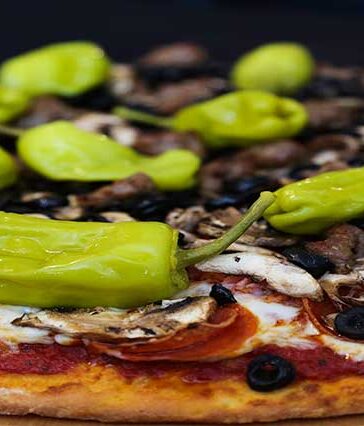You’ve found the perfect recipe for dinner that everyone is going to love. You spend hours in the kitchen chopping ingredients and whipping together something delicious. Piping fresh out of the oven, it’s time to serve your culinary creation.
Time to grab your dinnerware and plate up your meal. While regular dinnerware will get the job done, restaurant dinnerware is the much better option for your home. But is there even a difference between the two?
You may not be surprised to know there’s a difference between restaurant-grade dinnerware and the dinnerware you can buy from a store. But you may be surprised to find out the benefits and that you can buy restaurant dinnerware for your home.
Here’s why you should buy some for your house.
What Is Restaurant Dinnerware?
The name is self-explanatory; restaurant dinnerware consists of plates, bowls, and serving trays that restaurants use to present their meals.
While these may seem like a minor factor in the entire restaurant experience, dinnerware is highly important in a commercial restaurant setting. After all, they do say you eat with your eyes first.
The right dinnerware can enhance the look of your meal and make it look more appetizing. But a unique plate shape isn’t the only difference between commercial-grade dinnerware and retail dinnerware.
What Makes Restaurant Dinnerware Different?
You may think a plate is a plate, but there are some differences in dinnerware that aren’t so subtle. Choosing a restaurant plate over a traditional retail plate may be an investment, but with the benefits, it’s money well spent.
Here are the three main reasons to choose restaurant dinnerware over the traditional option.
Durability
Plates made for the restaurant industry are created to last and withstand much more than the wear and tear of everyday use. This high level of performance is typical for restaurants, but not always for retail plates.
While the plates made for home use can hold up in kitchen appliances, they can’t take a serious beating like commercial dinnerware.
Even if you don’t subject your plates to the same rigorous work of commercial kitchens, the extra durability can benefit your home kitchen. This can mean less chipping, cracking, and breaking than retail dinnerware.
Safety Standards
You probably haven’t thought of the safety standards for dinnerware. And you probably didn’t know that commercial dinnerware has higher safety requirements than the standard retail options.
Restaurant dinnerware has to be NSF (National Sanitation Foundation) certified, which means the dinnerware is able to go through a commercial dishwasher and is less likely to harbor bacteria. Retail dinnerware doesn’t need to meet these requirements.
Dinnerware Materials
Both restaurant and home dinnerware are available in a variety of materials. Most people will focus on the color and pattern of the plates, but the material is just as important. Here are the most common dinnerware materials.
Earthenware
Earthenware plates are ceramic that has been glazed with a watertight glaze. It’s thick and has a heavy feeling in your hands. Earthenware is typically dishwasher and microwave safe, so it’s great for everyday and casual use.
Bone China
Bone ash and porcelain clay combine to make bone china. This dishware is fired at a low temperature, which creates a lightweight and translucent material. It may look delicate and fragile, but bone china dinnerware is the strongest of ceramic options.
Melamine
This lightweight plastic material is sturdy with a glossy finish. Nearly unbreakable, it makes for a great option for homes with children or outdoor use. However, it’s not microwave or oven safe but can usually handle the top rack of the dishwasher.
Porcelain
Made of fine-particle clay and fired at a high temperature, porcelain is durable and nonporous. Porcelain is well-loved for its thin and delicate construction and near-translucent appearance. Porcelain is a great option for an upscale look.
Stoneware
Stoneware is another kind of ceramic, but it is a little more durable than earthenware because higher temperatures are used to fire the raw clay. It also has a vitreous material added that helps strengthen the dishware.
Vitrified Glass
Fired at the highest temperatures of all the dishware, this glass is extremely durable and nonporous. Vitrified glass is ideal for everyday use since it is nearly indestructible. This dishware won’t chip or break even with rough use.
Selecting Dinnerware
With this new background knowledge, it’s now time to put it to use. Time to take the dishes from the catalog to the dinner table. Here are some tips to help you pick out dinnerware like a restaurant professional.
First, consider your style. All dinnerware comes in various styles and colors, so finding one that matches your style should be no problem. Is your dining style casual or more formal; do you like a clean design or decorative edges?
One benefit of restaurant dinnerware is that it’s all made to go together. While retail dinnerware will come in a fixed matching set, you can usually get various commercial dishes that will all match despite not being in a packaged set.
Restaurant experts say when it comes to choosing dishware for your home, to create a set of eight to twelve place settings. Outside of the standard dinner plate, you should also choose salad, dessert, and bread plates, as well as soup bowls.
This allows you to have enough dishware for a formal dinner as well as good basics for casual meals.
Restaurant Dinnerware for Your Home
If you’re out shopping for plates for your home, it might be tempting to pick up a set from off the shelf. But resist the temptation of buying your dinnerware from a retail store. While both can get the job done, restaurant dinnerware is the better choice.
The differences between commercial and retail grade dinnerware demonstrate the benefits of switching things up in your home kitchen. You don’t have to be a professional chef to present your food like you are one.
So take pride in your culinary creations and display them on plates worthy of their deliciousness.
Did this article inspire you to whip up something delicious? Send this to a friend and read more articles.












